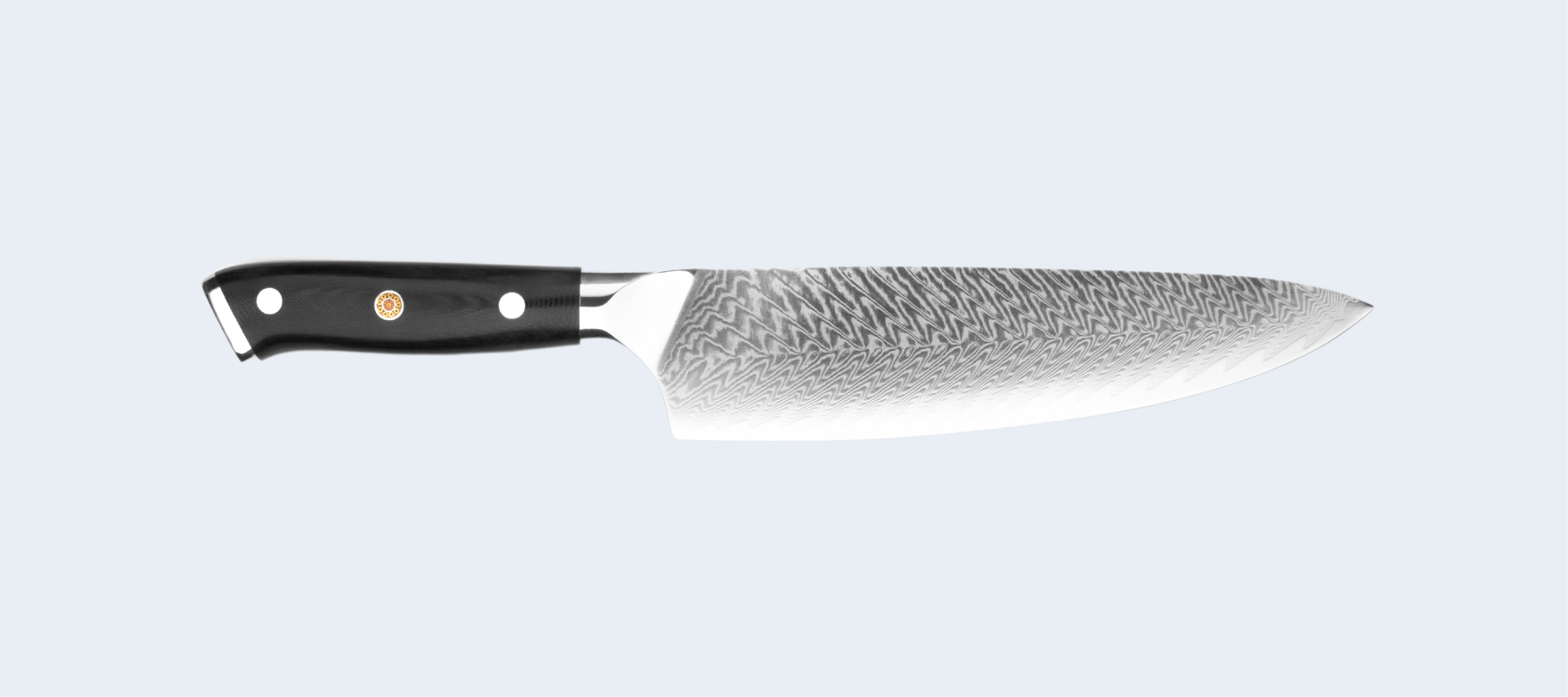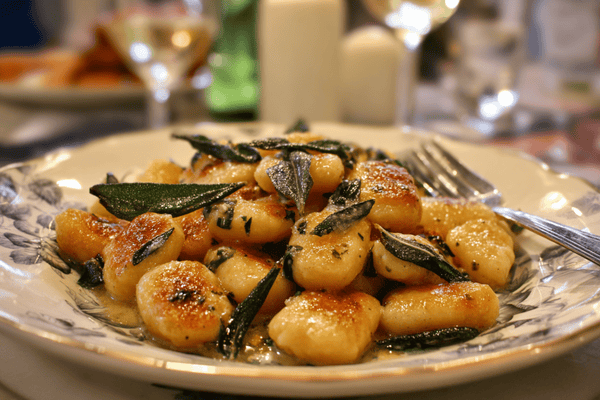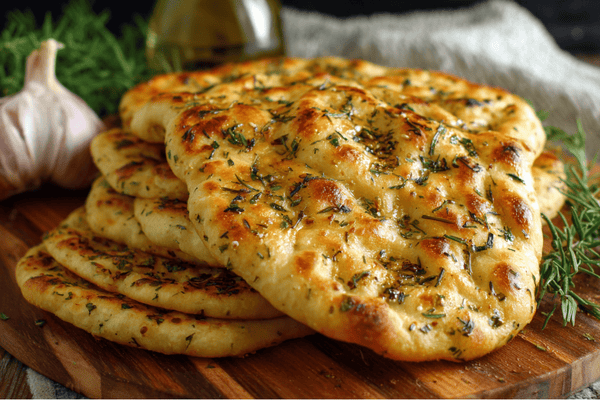 A carving knife, or slicing knife, makes it easy to cut through meat and is considered to be an essential item in the kitchen for both home and pro chefs. But with so many carving knife blades to choose from, the options can feel dizzying and it’s utterly important to make the right choice. If you don’t, and you end up with a substandard carving knife, you’ll find it difficult to use and potentially dangerous.
A carving knife, or slicing knife, makes it easy to cut through meat and is considered to be an essential item in the kitchen for both home and pro chefs. But with so many carving knife blades to choose from, the options can feel dizzying and it’s utterly important to make the right choice. If you don’t, and you end up with a substandard carving knife, you’ll find it difficult to use and potentially dangerous.Don't worry - we’ve got tons of information on how to choose the best carving knife and what you’ll need to know to get started about both the knife and the handle. Which is the best slicing knife? Which are the best rated carving knives? Is there a best carving knife set?
Table of contents
- What Is a Carving and Slicing Knife? Slicing Knife vs Carving Knife
- How Do I Choose a Carving or Slicing Knife?
- What Size Blade Do You Need?
- Do You Need a Manual or Electric Carving Knife?
- How Is the Blade Made?
- Balance and Weight
- Blade Edge Design
- What Is the Handle Like?
- Carving Knife Safety Tips
- How to Carve Like a Pro
- Final Thoughts
What Is a Carving and Slicing Knife? Slicing Knife vs Carving Knife
 Carving knives are a chef's knife designed for carving meat into thin slices and are usually made with stainless steel blades. The best carving knives have the ability to retain a sharp cutting edge and boast a narrow profile with divots which means that the blade is more easily able to move through the meat.
Carving knives are a chef's knife designed for carving meat into thin slices and are usually made with stainless steel blades. The best carving knives have the ability to retain a sharp cutting edge and boast a narrow profile with divots which means that the blade is more easily able to move through the meat.You can use a good carving knife for all kinds of meat such as brisket, ham, roasts, salmon and many others. A carving knife actually falls into the category of a slicing knife but the main difference between it and a regular slicer is that the carving knife is normally stiffer.
There are other variations between the design of these two types of blades and these usually relate to whether you are cutting boned or non-boned meat. For example, the carving knife features a pointed tip which is ideal for cutting boned meats as it allows you to move closely around the bone. Moreover, this type of cutting requires a more flexible blade.
So, are slicing knives the same as carving knives? Well, they come from the same family and both have long razor-sharp blades that are designed to cut with a single stroke, reducing friction and resistance. The benefit of this is that the juices are kept inside the meat; yum!
However, slicing knives don’t have the same pointed tip as their carving cousins and instead have a rounded tip that stops them from piercing the meat and letting the juices flow out. You’d normally use a slicing knife to tackle meat without bones. They’re semi-flexible and tall allowing for a larger cutting surface. What’s great is that these knives are typically more versatile and can also be used to cut things like vegetables and bread. However they are so similar that slicing knife vs carving knife comparisons are not substantial.
How Do I Choose a Carving Knife?
If you want to know which is the best slicing knife for roast beef, and you’re in the market to buy a new carving or slicing knife then you’re going to be spoiled for choice. There are so many stainless steel knives out there but this can make choosing one feel like a mammoth task.Not every knife is going to be suitable for every person so it’s really important to weigh up the features and figure out exactly what you need. Here are some of the most essential things to consider when buying a carving or slicing knife.
What Size Blade Do You Need?
 If you are choosing an electric carving knife (more on that later), then you will find that they are normally somewhere between seven and nine inches in blade length. This is typically shorter than manual blades but because they are motorised, you don’t need something quite as long to get the same performance.
If you are choosing an electric carving knife (more on that later), then you will find that they are normally somewhere between seven and nine inches in blade length. This is typically shorter than manual blades but because they are motorised, you don’t need something quite as long to get the same performance.However, if you’re going to buy a manual carving knife then you’ll want something that is at least eight inches in length. Generally speaking, you’ll want a much bigger 10-inch knife for things like a whole turkey or large ham whereas there are also 14-inch knives for a large brisket. It’s worth thinking about what you’ll be cooking and choose a knife that’s compatible with this.
Whatever size you go for, you’ll need to make sure that the blade is capable of making a large slice of meat. If can’t then you will have to resort to using a sawing motion which is not what these blades are designed to do. While you will be able to cut the meat, you won’t get such an even result and things can look messy.
Do You Need a Manual Or Electric Carving Knife?
As we have mentioned, there are both manual and electric carving knives. An electric carving knife normally has two blades that sit alongside one another and are secured with rivets. These rivets sit in channels which means the two blades can oscillate against one another in a back and forth motion. The blades on these knives are usually serrated which means they will make light work of cutting through meat.What’s great is not only are these super quick at cutting but most modern electric carving knives have auto adjustable speed. They’re great when you’ve got a lot of meat to carve but do keep in mind that the result won’t be quite as clean.
You might opt for a manual carving or slicing knife which has a smooth blade with a curved tip. These come in varying lengths and are ideal for gliding cleanly through the meat.
How Is the Blade Made?
If you want the best slicing knife with the cleanest and smooth cut then your carving or slicing knife blade must have a degree of flexibility. However, if it is too flexible then this means it may start to buckle halfway through the cut leaving you with a messier result. On the flip side, if the blade isn’t flexible enough, it can be a lot more of a challenge to control. High carbon steel blades will have a little more flexibility to them than a stainless steel blade. You have the choice between stamped blades and forged blades. The former is far more flexible and much more lightweight. On top of this, they’re less labour intensive and owing to how they’re made, don’t usually cost as much.
This can be off-putting to some people as they think that they’re not getting the best quality but this isn’t true. Most Japanese chef knives are made with high carbon stainless steel. Thanks to how steel is now formulated, you can get excellent quality stamped knives that are resistant, durable and perform amazingly well. The only downside is that they might not be able to retain their razor sharp edge as long as a forged knife.
Balance and Weight
 When you use a high-quality carving or slicing knife, it will feel well balanced. A good knife should have its weight balanced at the bolster (the bit that connects the blade and handle). This part of the knife should be bulky enough that it aids in moving the blade but without making it feel overly heavy or awkward.
When you use a high-quality carving or slicing knife, it will feel well balanced. A good knife should have its weight balanced at the bolster (the bit that connects the blade and handle). This part of the knife should be bulky enough that it aids in moving the blade but without making it feel overly heavy or awkward.If you’re using an electric carving knife then the weight is normally mostly in the handle owing to the presence of the motor. They’re typically a little heavier than a manual knife but shouldn’t feel uncomfortable to use.
Blade Edge Design
 Earlier, we talked about how a carving and slicing knife has divots. You might hear manufacturers referring to these with many different names including dimples, cullens, hollow edge or tsuchine if it is a Japanese knife. What are they for? Reducing drag when cutting.
Earlier, we talked about how a carving and slicing knife has divots. You might hear manufacturers referring to these with many different names including dimples, cullens, hollow edge or tsuchine if it is a Japanese knife. What are they for? Reducing drag when cutting.This does not result in serrated blades, but rather, divots are essentially little pockets of air and these reduce friction and release any food making it so much easier to cut evenly.
You will also need to consider the bevel of the knife-edge as this will determine how sharp the blade is. Typically speaking, the bevel will be between 14 and 20 degrees on either side. If you want a sharper knife then look for a more acute angle.
What Is the Handle Like?
 When choosing a carving or slicing knife, it isn’t only the blade that will need your attention. The handle is also something you will need to consider. One of the first things to think about is what material it is made from. Knife handles are made from all different types of material including wood, steel and plastic.
When choosing a carving or slicing knife, it isn’t only the blade that will need your attention. The handle is also something you will need to consider. One of the first things to think about is what material it is made from. Knife handles are made from all different types of material including wood, steel and plastic.Those that are made from wood will require a little more maintenance but they certainly look a lot nicer. However, if you want something easy to clean then plastic and steel can be washed in soapy water and require no maintenance. You will also need to consider which material will give you a secure grip.
You also need to look at the tang of the knife which is a piece of metal extending from the butt of the handle to the tip of the blade. You’ll often find knives are made from a single piece of steel which is great for durability but can be more difficult to grip.
Finally, when looking at the handle, you will want to make sure that it is comfortable to hold. Most good quality carving and slicing knives have ergonomically designed handles to aid grip so look for this feature. It’s also worth looking for a knife that has a handguard which prevents your hand from slipping onto the blade.
Carving Knife Safety Tips
It doesn’t take us to tell you that anything with a blade has the potential to be very dangerous and should be used with the utmost caution. If you’ve never used a carving or slicing knife before then we would advise you to read through the following basic safety tips.
- Never use your carving knife to cut towards yourself. You’ll have one free hand and you should place this on the opposite side to the direction you are carving. Moreover, never put your hand underneath the blade to try to catch the meat as it falls away.
- Make sure that when you are cutting, everything is kept dry. This will include the handle of the knife, the blade, the cutting surface and your hands. This will help to prevent slipping.
- It might come as a surprise to learn but a dull knife is far more dangerous than a sharp one which is why it is essential to always make sure you sharpen your knives. They equally then need to be stored properly to preserve their sharp edge, in something like a knife block.
How to Carve Like a Pro
 A lot of people assume that you should cut the meat with the grain but this isn’t the case. It’s much better to cut across the grain as this will stop it from ripping and pulling apart.
A lot of people assume that you should cut the meat with the grain but this isn’t the case. It’s much better to cut across the grain as this will stop it from ripping and pulling apart.If you want to get the evenest cut then you will need to make sure that you always hold the knife at the same angle. It can be helpful to use a carving fork alongside your knife as this will keep the meat stable as you cut.
We would also suggest buying a wooden cutting board that has a juice reservoir at the edges. This will stop any juice from being lost and once you have finished cutting, you’ll be able to use it in your gravy.
When roasting meats, you’ll cook it in different ways but most commonly, people opt for a medium roast. In this case, you’ll find the meat is much easier to cook than when you roast it well done and you will be able to cut the slices more thinly resulting in a better flavour.
Before you start carving, make sure that you allow your roasted meat to rest for around 15 minutes. This will ensure that the juices settle and spread through the meat.


